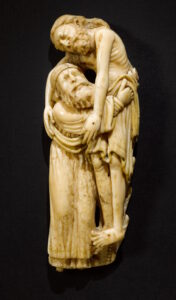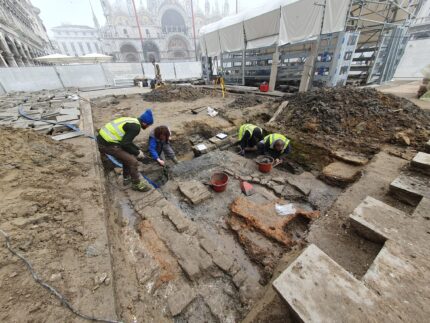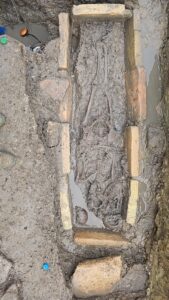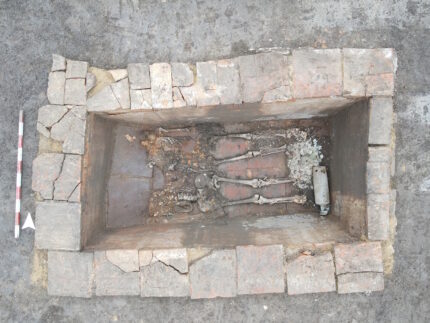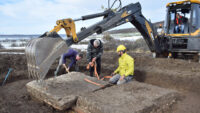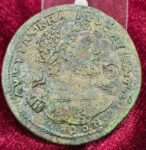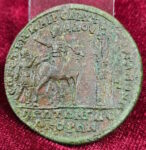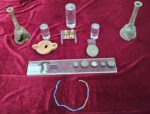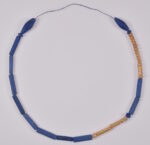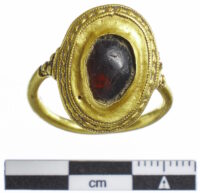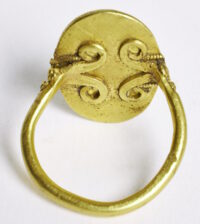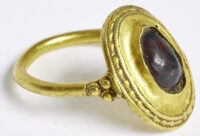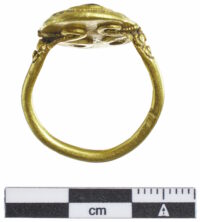 A study of burnt food residues in prehistoric ceramic vessels found in the Neolithic settlement of Oldenburg, Schleswig-Holstein, has revealed meals of varied cereals and wild plants and dairy, including a thick porridge with the same kind of intractable charred residue porridge so willingly leaves on pots today. Scanning electron microscopy and chemical analysis of food crusts caked to the inside of bowls identified the remains of emmer, barley and the starchy seeds of wild white goosefoot. The same ingredients have been identified in soil samples from the site.
A study of burnt food residues in prehistoric ceramic vessels found in the Neolithic settlement of Oldenburg, Schleswig-Holstein, has revealed meals of varied cereals and wild plants and dairy, including a thick porridge with the same kind of intractable charred residue porridge so willingly leaves on pots today. Scanning electron microscopy and chemical analysis of food crusts caked to the inside of bowls identified the remains of emmer, barley and the starchy seeds of wild white goosefoot. The same ingredients have been identified in soil samples from the site.
 Oldenburg was a Middle Neolithic settlement inhabited by Funnel Beaker groups, the first farmers of northern Europe, between 3270 and 2920 B.C., making it one of the oldest villages in Schleswig-Holstein. At its peak of occupation, there were about 40 dwellings in the village, an important example of how individual farmsteads evolved into small agrarian communities.
Oldenburg was a Middle Neolithic settlement inhabited by Funnel Beaker groups, the first farmers of northern Europe, between 3270 and 2920 B.C., making it one of the oldest villages in Schleswig-Holstein. At its peak of occupation, there were about 40 dwellings in the village, an important example of how individual farmsteads evolved into small agrarian communities.
 We know from stable isotope analysis and soil analysis which plants the Oldenburg farmers grew, the livestock they raised, which animals they hunted and plants they foraged, but less is known about the cooking practices, how they combined ingredients and prepared their meals. Analysis of the lipids absorbed into the ceramic have shed some light on the cooking of animal products, but new advances in microscopy and chemical analyses of residues have now opened up the possibilities of exploring cooked plant materials.
We know from stable isotope analysis and soil analysis which plants the Oldenburg farmers grew, the livestock they raised, which animals they hunted and plants they foraged, but less is known about the cooking practices, how they combined ingredients and prepared their meals. Analysis of the lipids absorbed into the ceramic have shed some light on the cooking of animal products, but new advances in microscopy and chemical analyses of residues have now opened up the possibilities of exploring cooked plant materials.
The new findings show that cereals indeed played an important dietary role and that wild plants enriched the food spectrum of the earliest farmers in the north. The barley was harvested when milky ripe and prepared in a similar way to the green spelt traditionally produced in Baden-Württemberg. The emmer was processed in a sprouted state, which gave the porridge a sweet flavour. Food in the Neolithic Age was therefore by no means bland, but rather varied. People had a highly differentiated sense of taste and attached great importance to good flavour.
So far, chemical analyses of the pottery have shown that the vessels contained dairy products. A look at the crusts burnt onto the cooking pot now shows that cereals and dairy products were probably processed into porridge for everyday use in the same vessels and formed a balanced dietary basis. “While the animal fats are absorbed into the ceramic and leave a signal there, the plant food components can only be detected in the burnt food crust,” emphasises Dr Lucy Kubiak-Martens, cooperation partner of BIAX Consult (Netherlands) and first author of the study. This shows how important a multi-method approach is for reconstructing Neolithic recipes created from a variety of ingredients. These discoveries expand our understanding of the long and complex process of transforming plants into meals during the period that followed the introduction of the agricultural way of life and cultivated plants in north-central Europe.
The study has been published in the journal PLOS ONE and can be read here.
